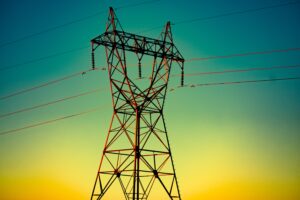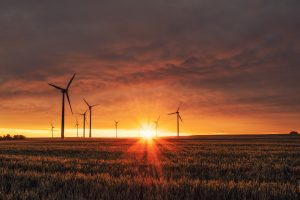Alberta 
Power problems: Why Alberta may ditch regulated-rate-option electricity as big bills loom
 Albertans have three options for buying electricity: The variable rate fluctuates based on market price, a fixed rate that’s predetermined based on contract term and the RRO where the utilities commission sets the price. Albertans who can’t afford a deposit or have low-to-no credit are put on the RRO plan. The UCP’s minister of affordability and utilities says new legislation will help people on the RRO. Last March, the RRO was 10.7-cents-per kilowatt hour. It’s since jumped up to more than 24 cents. It could reach up to 30 cents per kilowatt hour by March, experts predict.
Albertans have three options for buying electricity: The variable rate fluctuates based on market price, a fixed rate that’s predetermined based on contract term and the RRO where the utilities commission sets the price. Albertans who can’t afford a deposit or have low-to-no credit are put on the RRO plan. The UCP’s minister of affordability and utilities says new legislation will help people on the RRO. Last March, the RRO was 10.7-cents-per kilowatt hour. It’s since jumped up to more than 24 cents. It could reach up to 30 cents per kilowatt hour by March, experts predict.
Alberta is imposing a price ceiling for the RRO, so when the rate goes above 13-and-a-half cents per kilowatt hour, you’ll only pay the 13-and-a-half cents, right now. But any costs above that ceiling will be tacked on to future bills. In other words, instead of paying now, you’ll be paying later.
Source: CTV News Edmonton
Electricity Prices for Alberta
The Alberta power pool price averaged 31.173 cents per kWh in December 2022. This price is 12.47 cents higher than last month’s average. The pool price has averaged 16.214 cents per kWh over the last 12 months.
As of January 4, 2023, the forward market was predicting electricity prices for the calendar years of 2023, 2024, 2025, 2026, 2027, and 2028. These prices are 17.336, 9.994, 8.850, 7.875, 7.950, and 7.950 cents per kWh respectively.
Gas Prices for Alberta
Direct Energy’s gas rate for December 2022 was $6.140 per GJ in Alberta. The January 2023 rate has been set at $6.446 per GJ. Alberta gas prices have averaged $6.034 per GJ over the last 12 months.
As of January 4, 2023, the forward market was predicting gas prices for the calendar years of 2023, 2024, 2025, 2026, and 2027. These prices are 3.47, 3.58, 3.92, 4.29, and 4.46 cents per GJ respectively.
British Columbia 
BC hydrogen legislation: New regulator for hydrogen and other energy resources
British Columbia has passed legislation that will streamline the regulation of hydrogen and other energy resources in the province. Under the Energy Statutes Amendment Act, 2022, the name of the Oil and Gas Activities Act is changing to the Energy Resource Activities Act, signalling the province’s intent to expand the existing regulatory framework to include hydrogen, ammonia, and methanol. Including ammonia and methanol supports the regulation of hydrogen in British Columbia, as these compounds are crucial in the storage and transportation of hydrogen.
Under the new legislation, the Oil and Gas Appeal Tribunal will continue as the Energy Resource Appeal Tribunal, with powers to hear appeals of certain determinations made by the British Columbia Energy Regulator and designated officials, as well as appeals of other prescribed decisions made under the new legislation. While hydrogen may headline the new legislation, the Energy Statutes Amendment Act, 2022 introduces important changes to other aspects of resource development. The new legislation expands liability for individuals, including directors and officers, for permit obligations. Also, the legislation clarifies the regulatory framework for carbon capture and storage and expands the rights of the provincial government to explore for, access, develop and use storage reservoirs.
Source: BLG Canada’s Law Firm
Ontario 
The IESO is preparing for Ontario’s future electricity system with the release of three reports
 Ontario is in a strong position to decarbonize its rapidly growing electricity grid, starting with a moratorium on new natural gas generation in 2027, provided new storage, nuclear, renewables and expanded conservation efforts are ready when needed. This conclusion comes from a new report by Ontario’s Independent Electricity System Operator (IESO), one of three reports that focus on the transformation of Ontario’s electricity system.
Ontario is in a strong position to decarbonize its rapidly growing electricity grid, starting with a moratorium on new natural gas generation in 2027, provided new storage, nuclear, renewables and expanded conservation efforts are ready when needed. This conclusion comes from a new report by Ontario’s Independent Electricity System Operator (IESO), one of three reports that focus on the transformation of Ontario’s electricity system.
The Pathways to Decarbonization report finds that Ontario can begin moving toward a decarbonized grid starting with a moratorium on new gas generation in 2027, as long as sufficient non-emitting supply is in place to meet growing electricity demand. The 2022 Annual Planning Outlook forecasts electricity demand will increase almost two percent annually over the next two decades, driven by economic growth and electrification. The 2021-2024 Conservation and Demand Management Framework Mid-Term Review presents a plan for future energy and demand savings, including new programming, to help meet emerging system needs in 2025 and beyond.
Source: Save On Energy
Saskatchewan 
What the fusion breakthrough means for Saskatchewan and its economy
Scientists in the U.S. announced they produced more energy from a nuclear fusion experiment than was used to ignite it. Fusion produces energy and heat by forcing together hydrogen atoms without the radioactive by-products of nuclear reactions. Despite the excitement from the science world, there are some concerns and outlooks about what this means for the future of renewable energy, climate change, and the Saskatchewan economy.
Source: Laronge Now
Manitoba 
High energy bills? Tips on how to cut costs during Manitoba winters
 Managing heat production in the home is the key money-saver. One of the best ways to keep heat under control is ensuring proper insulation levels. Having proper windows and doors is also a big player in slashing expenses. Windows designed for Winnipeg’s weather is critical — the right build and the right glass are notable factors; a tri-pane glass is best, along with a half-inch air space between the glass and the panes. For those who might not have the cash to upgrade their insulation and windows, Efficiency Manitoba might be able to help.
Managing heat production in the home is the key money-saver. One of the best ways to keep heat under control is ensuring proper insulation levels. Having proper windows and doors is also a big player in slashing expenses. Windows designed for Winnipeg’s weather is critical — the right build and the right glass are notable factors; a tri-pane glass is best, along with a half-inch air space between the glass and the panes. For those who might not have the cash to upgrade their insulation and windows, Efficiency Manitoba might be able to help.
Source: Global News
New Brunswick 
NB Power seeks to offset part of rate hike in 2023 through legislative changes
New Brunswick’s largest utility says changes to the Electricity Act last year have allowed it to file an application with the Energy and Utilities Board to have a one per cent reduction in the rate set next year. NB Power created two accounts called the Energy Supply Cost Variance Account and the Electricity Sales and Margin Variance Account. Variances can be caused by weather, exchange rates, and other factors that either add to the cost of supplying energy or result in a savings. In October, the utility filed an application with the EUB to increase power rates across all classes of customers by 8.9 per cent. At the time, the utility cited increased costs of fuel, inflation, increased cost to purchase power and many years of lower rates. It’s considered the biggest rate hike in 15 years and won’t be enough to reduce the utility’s $5 billion in debt. The legislative changes do not allow for the money to be used for reduction of the debt and can only be applied to power rates.
Source: Global News
Prince Edward Island 
Help for Island residents to find Net Zero funding
A new website will help Islanders find funding to save them money on their energy bills. The web page has information about funding for homeowners, businesses, and community groups. It includes sustainable transportation incentives like electric vehicle rebates and e-bikes. It also includes income qualified benefits so families can easily find out if they may be eligible for free equipment like heat pumps or insulation. The page will be updated as new programs become available.
Source: Prince Edward Island
Québec 
Energy is Quebec’s ‘most important economic file’ for the next decade
Quebec must make its aging dams more powerful and build new hydroelectric facilities to help make up for an expected energy shortfall; several dams’ worth of energy can be freed up or created by using electricity more efficiently, expanding wind power generation and installing new equipment at existing hydro facilities. Demand for electricity in Quebec is surging — so much so that Hydro-Québec has predicted current power surpluses would disappear by the end of 2026. Annual electricity sales are expected to jump 14 per cent by 2032, according to Hydro-Québec’s 10-year electricity supply plan. Emerging sectors such as data centres and electric battery components will be particularly power-hungry. They are projected to account for 36 per cent of the additional demand by 2032, Hydro-Québec figures show. Electrifying transportation and converting building and industrial processes will also lead to increased energy demand.
Source: Montreal Gazette
Newfoundland and Labrador 
Support for Critical Mineral Exploration in Newfoundland and Labrador
Critical minerals are an essential component of many renewable energy and clean technology applications and are vital to building Canada’s green and digital economy. That is why the Government of Newfoundland and Labrador is joining the Government of Canada in providing support to help the province’s mining sector to grow and meet an increasing global demand for critical minerals. an investment of $5.2 million over the next three years for the Government of Newfoundland and Labrador to deliver two new critical mineral initiatives focused on geoscience and exploration activities. In addition, $4.6 million was confirmed in support through its existing Junior Exploration Assistance program and in-kind supports over three years. The funding will also provide increased support for eligible junior exploration companies searching for critical minerals in Newfoundland and Labrador.
Source: Newfoundland Labrador Canada
Nova Scotia 
Province orders Nova Scotia Power to use biomass to generate electricity
 Nova Scotia Power will use more biomass to generate electricity for the next three years, under regulatory changes by the province that are angering environmentalists and being lauded by the forestry industry. The changes to renewable electricity regulations in the Electricity Act that were announced Monday call for the utility to purchase 135,000 megawatt hours of renewable energy in 2023, 2024 and 2025, which is all but certain to come from biomass. Natural Resources Minister Tory Rushton said biomass is a resource that can be used at a time when fossil fuel prices remain volatile, until more wind and solar projects are ready to come online. Rushton said sawmills around the province have lots of wood chips and other byproducts from forestry operations that can be used to meet the new requirements. The regulations prohibit cutting whole trees to generate electricity and only allow products left over from sustainable timber harvest and primary processing to be used. Nova Scotia Power is required to generate at least 40 per cent of its electricity from renewable sources, although that has been a challenge because of delays getting the full amount of power from Labrador via the Maritime Link. The utility is required to hit 80 per cent renewable-generated electricity by 2030.
Nova Scotia Power will use more biomass to generate electricity for the next three years, under regulatory changes by the province that are angering environmentalists and being lauded by the forestry industry. The changes to renewable electricity regulations in the Electricity Act that were announced Monday call for the utility to purchase 135,000 megawatt hours of renewable energy in 2023, 2024 and 2025, which is all but certain to come from biomass. Natural Resources Minister Tory Rushton said biomass is a resource that can be used at a time when fossil fuel prices remain volatile, until more wind and solar projects are ready to come online. Rushton said sawmills around the province have lots of wood chips and other byproducts from forestry operations that can be used to meet the new requirements. The regulations prohibit cutting whole trees to generate electricity and only allow products left over from sustainable timber harvest and primary processing to be used. Nova Scotia Power is required to generate at least 40 per cent of its electricity from renewable sources, although that has been a challenge because of delays getting the full amount of power from Labrador via the Maritime Link. The utility is required to hit 80 per cent renewable-generated electricity by 2030.
Source: CBC
Nunavut 
How Canada’s northern territories are working to reduce reliance on diesel for power
The territory does not have emissions reduction targets, but renewable energy projects are underway. Emissions in 2020 were 603,000 tonnes of carbon dioxide equivalent, an increase of three per cent since 2005. Nunavut is unique in Canada, as it does not have a shared transmission grid. Instead, each of the territory’s 25 communities has its own power plant and they all rely on imported diesel. Quilliq Energy Corporation is owned by the Nunavut government and is responsible for power generation, transmission, and distribution. It has a net metering program that allows residents and municipalities to receive energy credits for surplus renewable energy. The corporation installed solar panels at Iqaluit’s power plant in 2016 as part of a pilot project “with promising results.” It plans to construct a new hybrid solar-diesel power plant in Kugluktuk, which is expected to be completed late next year.
Source: Energetic City
Northwest Territories 
2022-2025 Energy Action Plan will bring $194 million in energy investments
 As part of its effort to support secure, affordable, and sustainable energy in the Northwest Territories, the Government of the Northwest Territories (GNWT) has released the 2022-2025 Energy Action Plan. Over the next three years, $194 million will be invested to implement 68 actions and initiatives that advance the objectives outlined in the 2030 Energy Strategy. Activities under the updated action plan include grants and incentives to save energy and reduce greenhouse gas emissions in buildings, rebates to deploy electric vehicles in hydro communities, support for communities to develop clean energy projects, as well as continuation of major energy infrastructure projects. The actions and initiatives proposed under the action plan are expected to reduce NWT greenhouse gas emissions by 51 kilotonnes by 2025.
As part of its effort to support secure, affordable, and sustainable energy in the Northwest Territories, the Government of the Northwest Territories (GNWT) has released the 2022-2025 Energy Action Plan. Over the next three years, $194 million will be invested to implement 68 actions and initiatives that advance the objectives outlined in the 2030 Energy Strategy. Activities under the updated action plan include grants and incentives to save energy and reduce greenhouse gas emissions in buildings, rebates to deploy electric vehicles in hydro communities, support for communities to develop clean energy projects, as well as continuation of major energy infrastructure projects. The actions and initiatives proposed under the action plan are expected to reduce NWT greenhouse gas emissions by 51 kilotonnes by 2025.
Source: Government of Northwest Territories
Yukon 
Yukon set electricity demand record just hours before Whitehorse power outage affecting thousands
ATCO Electric Yukon and the Yukon Energy Corporation said the outage was caused by an overloaded breaker at the Takhini substation that tripped due to protection settings. Before the power went out the Yukon Energy Corporation had posted on Facebook that Yukoners needed a record 117.1 megawatts of electricity, topping the previous record, set on Jan. 6, by one megawatt. Yukon Energy Corporation also asked Yukoners to “help us beat winter peaks and reduce the use of diesel by reducing the amount of electricity you use during periods of high electricity demand.” Peak times are typically between 7 a.m. and 9 a.m., and 5 p.m. and 7 p.m. from Monday to Friday. The post suggested using a block heater timer on vehicles, delaying the use of major appliances, and turning down the thermostat by a degree or two. The corporation said more than 90 per cent of electricity generated in the Yukon comes from renewable resources, although the territory relies on hydro, liquefied natural gas, and rented and permanent diesel resources to produce electricity during periods of high electricity use each winter.
Source: Yukon News